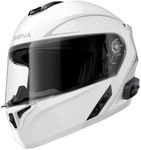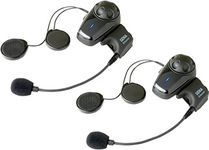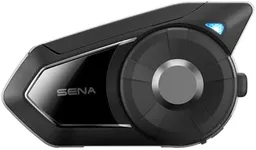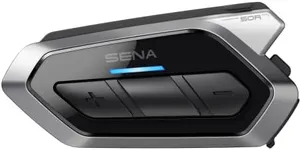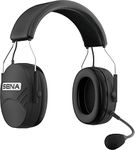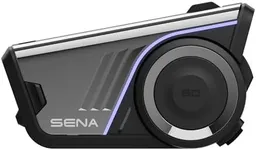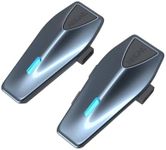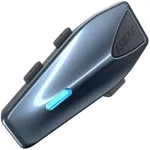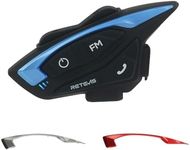Buying Guide for the Best Sena Headsets
When choosing a Sena headset, it's important to consider your specific needs and preferences to ensure you get the best fit for your riding experience. Sena headsets are known for their high-quality audio, robust connectivity, and user-friendly features, making them a popular choice among motorcyclists. To make an informed decision, you should focus on several key specifications that will impact your overall satisfaction with the product.Bluetooth VersionBluetooth version determines the quality and stability of the wireless connection between your headset and other devices. Newer versions, like Bluetooth 5.0, offer better range, faster data transfer, and improved power efficiency compared to older versions. If you plan to use your headset for long rides or in areas with potential interference, opting for a headset with the latest Bluetooth version can provide a more reliable and seamless experience.
Intercom RangeIntercom range refers to the maximum distance over which the headset can communicate with other headsets. This is crucial for group rides where staying in touch with fellow riders is important. Short-range intercoms (up to 1 km) are suitable for small groups or city rides, while long-range intercoms (up to 2 km or more) are better for larger groups or open-road adventures. Consider the typical riding environment and group size when choosing the appropriate intercom range.
Battery LifeBattery life indicates how long the headset can operate on a single charge. This is essential for ensuring that your headset lasts throughout your rides without needing frequent recharges. Headsets with shorter battery life (up to 8 hours) may be sufficient for daily commutes, while those with longer battery life (10 hours or more) are better suited for long-distance trips. Assess your riding habits and choose a headset with a battery life that matches your needs.
Audio QualityAudio quality encompasses the clarity and richness of sound produced by the headset. High-quality audio is important for clear communication, music enjoyment, and navigation prompts. Look for headsets with advanced noise control features and high-definition speakers to ensure the best audio experience. If you value crisp and immersive sound, prioritize headsets known for superior audio performance.
Ease of UseEase of use refers to how user-friendly the headset is, including the simplicity of its controls and the intuitiveness of its interface. This is important for ensuring that you can operate the headset safely and efficiently while riding. Headsets with large, easily accessible buttons and voice command capabilities are ideal for minimizing distractions. Consider your comfort level with technology and choose a headset that you find easy to operate.
CompatibilityCompatibility involves the headset's ability to connect with various devices and other headsets. This is crucial for ensuring seamless integration with your smartphone, GPS, and other communication systems. Check if the headset is compatible with the devices you plan to use and if it supports universal intercom features for connecting with different brands. If you use multiple devices or ride with a diverse group, prioritize headsets with broad compatibility.
Weather ResistanceWeather resistance indicates the headset's ability to withstand different weather conditions, such as rain, dust, and extreme temperatures. This is important for ensuring durability and reliable performance in various environments. Look for headsets with an IP rating (e.g., IP67) that certifies their resistance to water and dust. If you frequently ride in challenging weather conditions, choose a headset with high weather resistance to ensure longevity and consistent performance.

